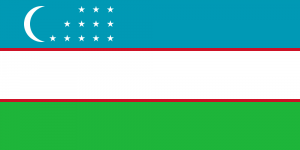Language/Northern-uzbek/Grammar/Pronouns
Hi Northern Uzbek learners! 😊
In today's lesson, we will be discussing the use of pronouns in Northern Uzbek. Pronouns are an important part of any language, and Northern Uzbek is no exception. We will look at the different types of pronouns, how they are used, and how to correctly form them.
Types of Pronouns
Pronouns can be divided into two main categories: personal pronouns and possessive pronouns.
Personal Pronouns
Personal pronouns are used to refer to people or things. In Northern Uzbek, there are three types of personal pronouns: subject pronouns, object pronouns, and reflexive pronouns.
Subject pronouns are used when the pronoun is the subject of the sentence. For example:
- I am going to the store.
- He is eating lunch.
- She is studying for her exam.
Object pronouns are used when the pronoun is the object of the sentence. For example:
- I saw him.
- She gave it to me.
- They heard us.
Reflexive pronouns are used when the pronoun is referring back to the subject of the sentence. For example:
- I hurt myself.
- She bought herself a new dress.
- They enjoyed themselves.
Possessive Pronouns
Possessive pronouns are used to indicate ownership or possession. In Northern Uzbek, there are two types of possessive pronouns: possessive adjectives and possessive pronouns.
Possessive adjectives are used to modify a noun. For example:
- My book
- His car
- Her house
Possessive pronouns are used to replace a noun. For example:
- The book is mine.
- The car is his.
- The house is hers.
Forming Pronouns
In Northern Uzbek, pronouns are formed by adding suffixes to the root word. For example, the root word for "I" is "man", and the suffix "-am" is added to form the pronoun "manam" (I).
The following table shows the suffixes used to form pronouns in Northern Uzbek:
| Subject | Object | Reflexive | Possessive Adjective | Possessive Pronoun |
|---|---|---|---|---|
| manam | mani | man | manim | maning |
| senam | seni | sen | senim | sening |
| u | uni | u | uyim | uning |
| biz | bizni | biz | bizim | bizning |
| ular | ularni | ular | ularim | ularning |
For example, the pronoun "he" is formed by adding the suffix "-u" to the root word "u". Therefore, the pronoun "he" is "u".
Conclusion
In this lesson, we have discussed the use of pronouns in Northern Uzbek. We have looked at the different types of pronouns, how they are used, and how to correctly form them. We hope that this lesson has helped you to gain a better understanding of Northern Uzbek grammar.
If you have any questions, please ask them in the comments section below.
Feel free to edit this wiki page if you think it can be improved. 😎
Related Lessons
- Plural
- Comparative Adjectives
- Nouns
- Accusative case
- Past Tense
- Conditional Mood
- The verb KELMOQ – to come
- Adjectives
- Negation

